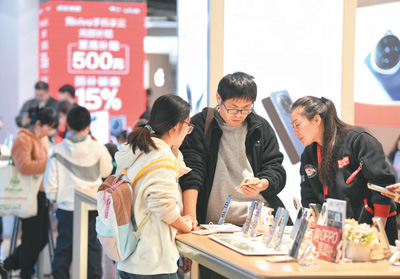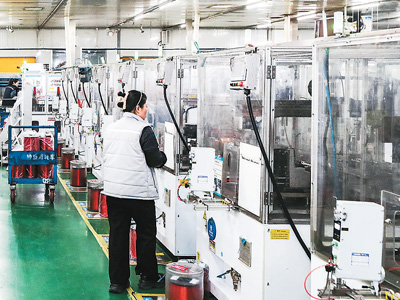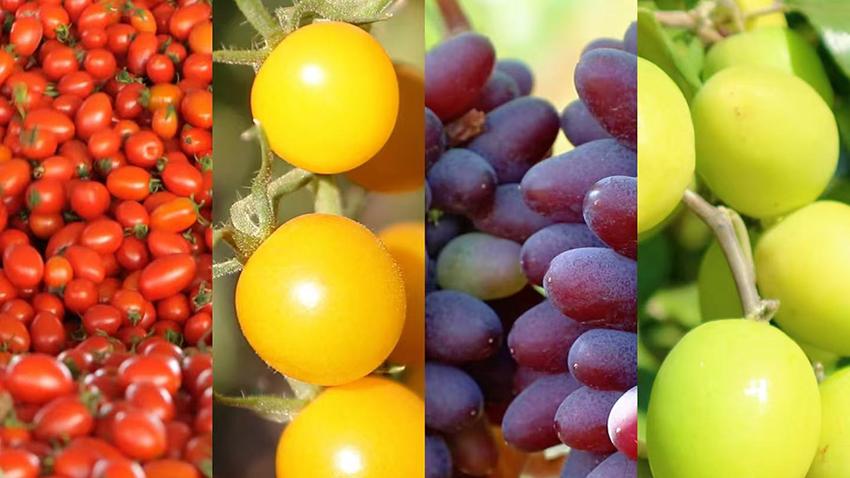Surging consumer goods in China indicate robust market recovery
"The supermarket shelves have new items!" "The snack section has so many new treats!"
Many consumers have noticed that new flavors of snacks, new brands of beverages, and new household appliances with enhanced features are appearing more frequently during their shopping trips.
According to data from GS1 China under the State Administration for Market Regulation (SAMR), China registered 21.64 million types of new consumer products in 2024, a 14.1 percent increase from the previous year.

Consumers select digital devices at a shopping mall in Shushan district, Hefei, east China's Anhui Province. (Photo/Chen Sanhu)
For the first time since 2020, the annual number of newly launched consumer goods exceeded 20 million, reaching a five-year high. On average, more than 50,000 new products entered the market each day.
"Whether in large supermarkets or convenience stores, I always discover something new. For instance, a certain mineral water brand has launched soda water in various flavors," said Wang Langkun, a post-95 Beijing resident.
A supermarket in Beijing's Chaoyang district sells more than 200 different kinds of beverage products, including sugar-free and sweetened drinks, sodas, and tea drinks, as well as over 700 types of snacks.
Data from GS1 China revealed that by the end of December 2024, the total types of consumer goods in the country had increased by 11.4 percent year on year to around 211.11 million, covering hundreds of industries from food and beverages to clothing, medical supplies, home appliances, cultural and educational materials, and home furnishings.
Specifically, upgraded household appliances showed remarkable growth, driven by trade-in policies. For instance, new types of water heaters, domestic cookware, and range hoods soared by 132.4 percent, 95.5 percent, and 200.7 percent, respectively.
Regionally, China's eastern, central, and western regions all showed significant growth in 2024, adding around 17.80 million, 2.04 million, and 1.28 million types of new products, respectively, an increase of 12.7 percent, 35.3 percent, and 15.6 percent, respectively.
An executive from GS1 China said the national commodity database now contains 210 million types of registered consumer goods, covering 90 percent of popular consumer goods. The database adds over 50,000 new products daily.
Behind each new product launch are enterprises adapting to market demands and filling the market gaps through technological innovation.

An employee works on a company's production line of home appliance motors in Huaian, east China's Jiangsu Province. (Photo/Zhao Qirui)
In Taiping town, Liucheng county, Liuzhou city of south China's Guangxi Zhuang Autonomous Region, sugarcane was traditionally used primarily for sugar production. "Sugarcane contains over 70 percent water. The water produced during sugar production was previously used for equipment cooling and then discharged after treatment," said Zhou Wenxing, assistant production manager at Guangxi Fengtang Biochemical Co., Ltd., a subsidiary of Shanghai Sugar Cigarette & Wine (Group) Co., Ltd.
"It's actually quite a waste, as the water contains organic electrolytes, amino acids, sugarcane polyphenols, and other nutrients, but we previously lacked effective technology to extract and utilize them."
After collaborating with the green sugar production team from Guangxi University to create a "water-sugar" co-production model, Guangxi Fengtang Biochemical Co., Ltd. successfully developed a sugarcane beverage.
Li Kai, director of the Ministry of Education's Engineering Research Center for Sugar Industry and Comprehensive Utilization at Guangxi University, said this achievement represented over a decade of technological breakthroughs. The new technologies not only extend the sugarcane industry chain but also increase the value-added of the sector, strengthening the foundation for sugarcane farmers to increase production and incomes.
The newly launched sugarcane beverage debuted in Shanghai this February. "I initially thought it would taste like freshly squeezed sugarcane juice, but surprisingly, the sweetness wasn't overwhelming, yet the aftertaste was quite distinct," said a resident surnamed Ding in Shanghai.
"This commercial-scale production represents a milestone in our collaboration among industries, universities, and research institutes, while also filling a gap in the domestic sugarcane beverage market," Li said.
An executive from GS1 China analyzed that the five-year high in the types of newly registered consumer goods in 2024 reflects the continuous release of domestic demand potential, driven by rising incomes, consumption upgrades, and a series of policies to expand domestic demand and boost consumption.
It demonstrates continuous industry upgrades, with enterprises speeding up product upgrading in response to market demands, particularly by increasing product development and launches in emerging and popular fields, the executive said. This, in turn, pushes the entire industry toward a more market-oriented and competitive direction.
In addition, it reflects an improving macroeconomic environment and rising investment confidence, with companies having sufficient motivation and resources to invest in new product development and production, the executive added.
An official from the SAMR stated that the substantial growth in types of consumer goods results from the combined effects of policy guidance, demand upgrades, and enterprises' innovation, signaling that China's consumer market has transitioned from a steady recovery to an accelerated growth trajectory.
Photos
Related Stories
- China’s oil consumption projected to peak in 2025, boosting inclusivity in global green, low-carbon transition
- Foreign brands benefit from China's consumption stimulus
- China urges loosening car quota rules in consumption boost plan
- Cash, confidence, consumption: How China's policy kit fuels consumers' wallets?
- China to enhance consumption capacity, increase urban and rural residents' income: senior official
- Chinese trade unions unveil measures to boost cultural, tourism consumption among workers
- China's subsidy program spurs digital product consumption
- China's subsidy program spurs digital product consumption
- Adaptive reuse projects offer fun urban hangouts for Chinese youngsters
- China's e-bike trade-ins hit 2 mln amid policy support
Copyright © 2025 People's Daily Online. All Rights Reserved.









